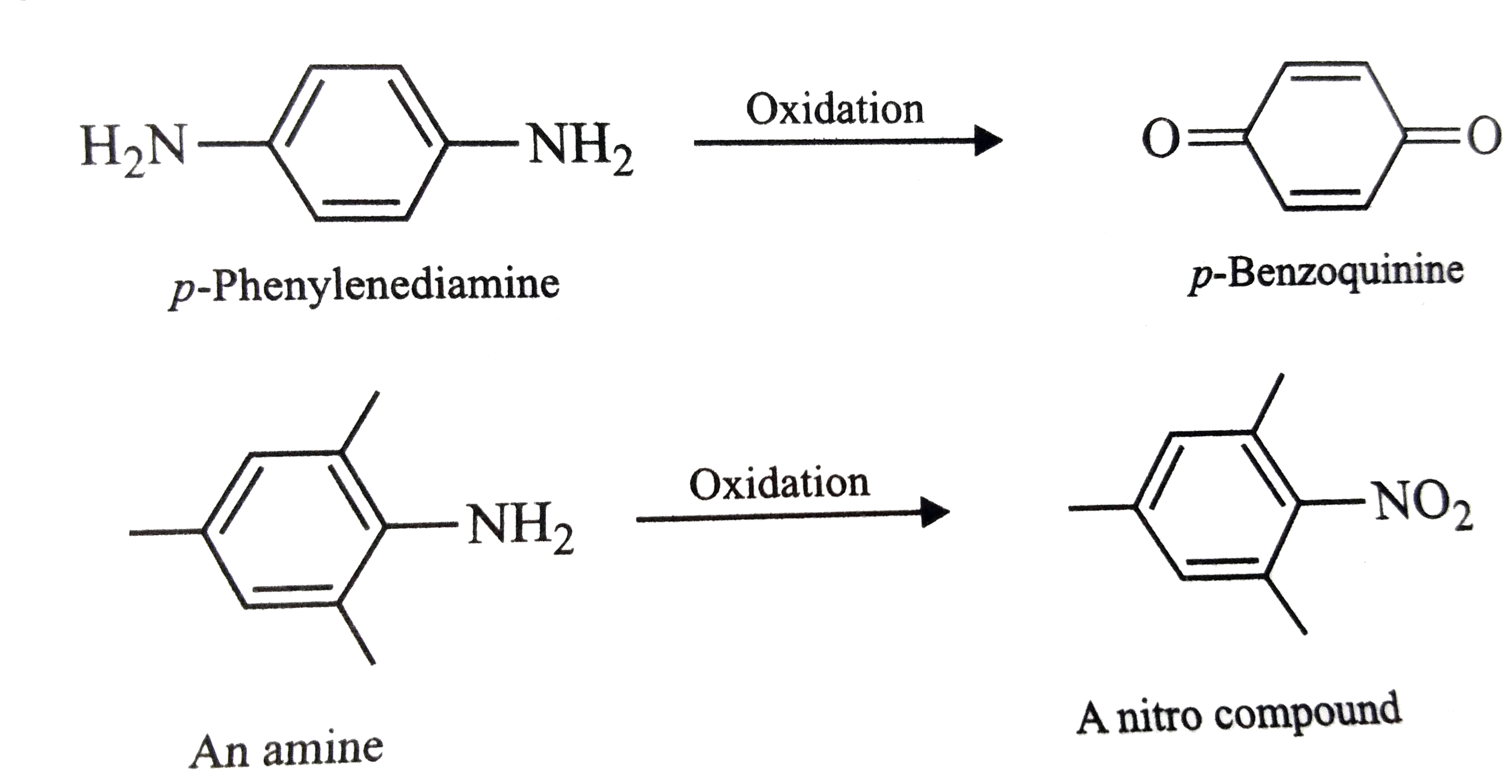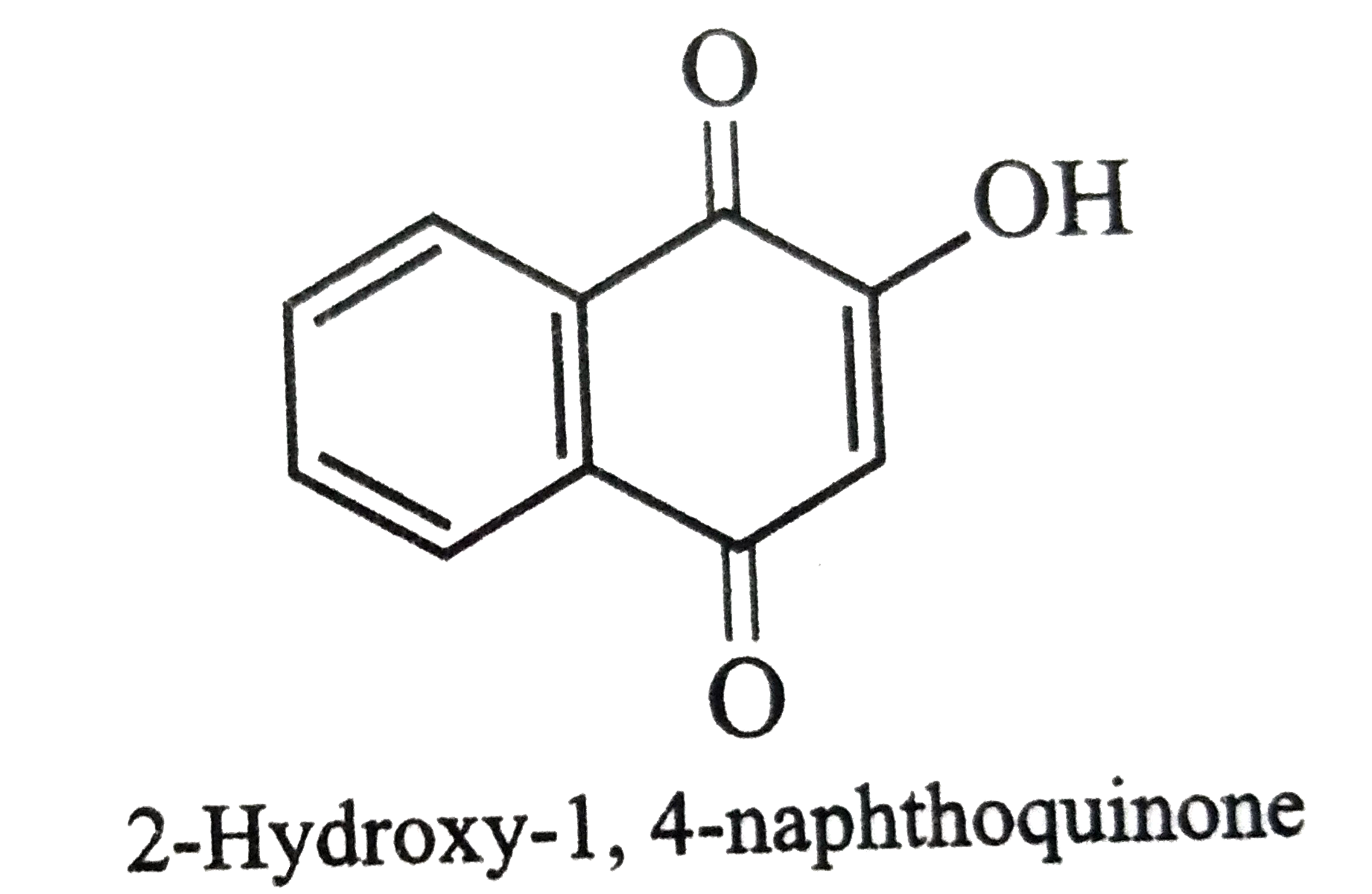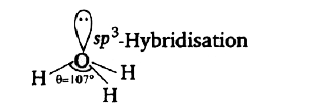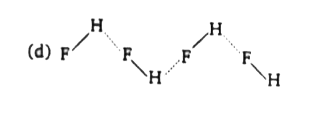Explore topic-wise InterviewSolutions in .
This section includes InterviewSolutions, each offering curated multiple-choice questions to sharpen your knowledge and support exam preparation. Choose a topic below to get started.
| 30401. |
The half-life of ._(6)C^(14), if its decay constant is 6.31 xx 10^(-4) is |
|
Answer» 1098 YR |
|
| 30402. |
The half-life of ._(38)^(90)Sr is 20 years. If its sample having initial activity of 800 dis/min is taken, what would be its activity after 80 years |
|
Answer» 500 dis/min Activity aftern half lives `= (1)/(2^(n)) xx a` |
|
| 30403. |
The half-life of 2 sample are 0.1 and 0.4 seconds.Their respective concentration are 200 and 50 respectively.What is the order of the reaction. |
|
Answer» 0 |
|
| 30404. |
The half-life of 2 sample are 0.1 and 0.4 seconds . Their respective concentration are 200 and 50 respectively . What is the order of reaction |
|
Answer» Solution :`t_(1//2) prop a^(1-N) IMPLIES (0.1)/(0.4) = ((200)^(1-n))/((50)^(1-n)) implies (1)/(4) [(4)/(1)]^(1-n) = [(1)/(4)]^(n-1)` `implies (1)/(4^(1)) = (1)/(4^(n-1)) therefore n - 1 = 1 , n = 2`. |
|
| 30405. |
The half-life for the reaction N_(2)O_(5) to 2 NO_(2) + (1)/(2) O_(2) is 2.4 h at STP . Starting with 10.8 g of N_(2)O_(5) how much oxygen will be obtained after a period of 9.6 h |
|
Answer» 1.5 L Here n = NUMBERS of half-life `N_(2)O_(5) to 2NO_(2) + (1)/(2)O_(2) "" therefore N_(2) = 0.1 xx ((1)/(2))^(n)` Moles of `N_(2)O_(5)` LEFT `= (0.1)/(16)` Moles of `N_(2)O_(5)` CHANGED to product = `(0.1 - (0.1)/(16)) = (1.5)/(16)` MOL Moles of `O_(2)` formed = `(1.5)/(16) xx (1)/(2) = (1.5)/(32)` Volume of oxygen = `(1.5)/(32) xx 22.4 = 1.05` L. |
|
| 30406. |
The half-life of .^(14)C is about |
|
Answer» 12.3 YEARS |
|
| 30407. |
The half - life for the reaction. N_(2)O_(5)to2NO_(2)+1/2O_(2) is 24 hrs. at 30^(@)C. Starting with 10 g of N_(2)O_(5) how many grams of N_(2)O_(5) will remain after a period of 96 hours ? |
|
Answer» `1.25` G |
|
| 30408. |
The half-life of 1 g of radioactive sample is 9 hour. The radioactive decay obeys first order kinetics. The time required for the original sample to reduce to 0.2 g is |
|
Answer» 15.6 hours |
|
| 30409. |
The half life for radioactive decay of ""^(14)C is 5730 years. An archaeological artifact containing wood hadonly 80% of the ""^(14)C found in living tree. Estimate the age of the sample. |
|
Answer» SOLUTION :RADIOACTIVE decay follows FIRST order kinetics Decay constant (k) `=(0.693)/(t_(1//2))=(0.693)/(5730)"years"^(-1)` Using the equation for first order kinetics and substituting the VALUES, we get `t=(2.303)/(k)"log"([A]_(0))/([A])=(2.303)/((0.693//5730" years"^(-1)))"log"(100)/(80)` or `t=(2.303xx5730)/(0.693)xx0.0969"years"=1845` years Thus, age of the sample = 1845 years. |
|
| 30410. |
The half life for the reaction N_(2)O_(5) hArr 2NO_(2)+1/2 O_(2) in 24 hr at 30^(@)C. Starting with 10 g of N_(2)O_(5) how many grams of N_(2)O_(5) will remain after a period of 96 hours ? |
|
Answer» Solution :`K = (0.063)/(24) hr^(-1) = (2.303)/(96)` log `(10)/(a -X)` or log `(10)/(a-x) = 1.2036` or 1 - log ( a-x) = `1.2036` or log (a-x) = `-0.2036 = 1.7964` or (a-x) = antilog 1.7964 or (a-x) = antilog 1.7964 = 0.6258 GM . |
|
| 30411. |
The half-Life for radioactive decay of ""^(14)C is 5739 years.An archaeological artifact containing wood had only 80% of the ""^(14)C found in a living tree.Estimate the age of the sample. |
|
Answer» Solution :The half LIFE of `""^(14)Ct_((1)/(2))=5730 year` After…….. Time it is 80 `""^(14)C` Soif initially `""^(14)C_(0)=[R]_(0)` So after t time `""^(4)C=[R]_(t)80%[R]_(0)=0.8[R_(0)]` All RADIOACTIVE dcay are first ORDER reaction. So,`t_((1)/(2))=(0.693)/(k)` (But `t_((1)/(2))`=5730 years) `THEREFORE k=(0.693)/(5730)years` For ,first order reaction, `t=(2.303)/(k)` log `([R]_(0))/([R]_(t))=(2.303xx5730)/(0.693)` log `([R]_(0))/(0.78[R]_(0))` `=(2.303xx5730)/(0.693)` log 1.25 `(2.303xx5730)/(0.693)xx00969=1845.2 years` |
|
| 30412. |
The half life for radioactive decay of ""^(14)C is 5730 years. An archaeological artifact containing wood had only 80% of the ""^(14)C found in a living tree. Estimate the age of the sample . |
|
Answer» Solution :`k1.209 XX 10^(-4) " YEAR"^(-1)` Age `to` 1848 year. |
|
| 30413. |
The half-life for the reaction2.4h STP. Starting with 10.8g N2O5 how much oxygen will be obtained after a period of 9.6 h ? |
|
Answer» 1.5 L |
|
| 30414. |
The half-life for radioactive decay of ""^(14)C is 5730 y. An archaelogical artifact contained wood that had only 80% of the ""^(14)C found in living tree. Estimate the age of the sample. |
|
Answer» Solution :RADIOACTIVE DECAY follows FIRST order kinetics. Decay constant `(K)=(0.693)/(t_(1//2))=(0.693)/(5730)"yr"^(-1)` `t=(2.303)/(k)log""([A]_(0))/([A])=(2.303)/((0.693//5730" yr"^(-1)))log""(100)/(80)=(2.303xx5730)/(0.693)xx0.0969" yr"=1845" years"` |
|
| 30415. |
The half life for radioactive ""^(14)C is 5730 years. An archeological artefact containing wood had only 80% of ""^(14)C activity as found in a living tree. Calculate the age of the artefact. |
|
Answer» Solution :Radioactive decay is a first order REACTION. `k=(2.303)/(t)"log"([A]_(0))/([A]) or t=(2.303)/(t)"log"([A]_(0))/([A])` For 80% activity , `[A]=0.8[A]_(0)` Substituting in the above EQUATION, we get `t=(2.303)/(0.693//t_(0.5))xx"log"([A]_(0))/(0.8[A]_(0))` or `t=(2.303)/(0.693) xx 5730 xx 0.0969=1845` YEARS THUS, the artefact in 1845 years old. |
|
| 30416. |
The half life for radio active decay of ""^14C is 5730 Y. An achaeological artefact contained wood had only 80% of the 14 C found in a living tree. Estimate age of the sample. |
|
Answer» Solution :Decay constant (k) = `0.693/(t_1//2) = (0.693/5730yr^(-1))` RADIO active dacays follow FIRST order kinetics `t=2.303 / k log""([A]_0)/([A])` `k = 0.693/ 5730 yr^1[A]_0= 100%, [A] = 80%` `:.t = ((2.303 xx 5730)/0.693) xx log"" 100/80` `=((2.303 xx 5730 xx0.0969)/0.693)= 18 45` years. |
|
| 30417. |
The half-lifefor decay of ""^(14)C by beta-emission is 5730 years.The fraction of ""^(14)C decays, in a sample that is 22,920 years old, would be |
|
Answer» `1//8` Where, `N_0` = Initial amount, N = Amount left `n = t/(t_(1//2))` Given , `t_(1//2) = (22,920)/(5730) = 4 , N/(N_0) = (1/2)^(4) = 1/16 implies N = (N_0)/(16)` The FRACTION of `""^(14)C` that DECAYED = `N_0 - N` `=N_0 - (N_0)/(16) = 15/16 N_0` |
|
| 30418. |
The half-life for decay of .^(14)C " by " beta-emission is 5730 years. The fraction of .^(14)C decays, in a sample that is 22,920 years old, would be |
|
Answer» `1//8` `N_(0)`= INITIAL amount, N =amount left so fraction reacted `N_(0) - (N_(0))/(16) = (15)/(16) N_(0)` |
|
| 30419. |
The half- life for decay of ""^(14)C by beta-emission is 5730 years. The fraction of ""^14C decays, in a sample that is 22.920 years old, would be : |
|
Answer» `1//8` |
|
| 30420. |
The half life fora reaction is…..of temperature: |
|
Answer» Independent |
|
| 30421. |
The half life for a given reaction was doubled as the initial concentration of the reaction was doubled. The order of the reactio is |
| Answer» ANSWER :A | |
| 30422. |
The half-life of decomposition of gaseous CH_(3)CHO at initial pressure of 365 mm and 170 mm of Hg were 420 sec and 880 sec respectively. The order of the reaction is: |
|
Answer» <P> `880/410 = [364/170]^(n-1)` `[2.14]^(1) = [2.14]^(n-1) , n-1 =1, n=2` |
|
| 30423. |
The half-life a first order reaction is 24 hours. If we start with 10M initial concentration of the reactant then conc after 96 hours will be |
|
Answer» `6.25M` |
|
| 30424. |
The half cell reactions of the cell used in hearing aids are Zn to Zn^(2+)+2e^(-)(E^(0)= +0.76 V) Ag_(2)O+H_(2)O+2e^(-) to 2Ag+2OH^(-)(E^(0) = +0.34 V) E^(0) of the cell is |
|
Answer» 0.84 V |
|
| 30425. |
The half-cell reactions of rusting of iron are 2H^(+)+1/2O_(2)+2etoH_(2)O," "E^(0)=+1.23V Fe^(2+)+2etoFe," "E^(0)=-0.44V DeltaG^(0) (in kJ) for the reaction is |
| Answer» SOLUTION :`Fe+2H^(+)+1/2O_(2)TOFE^(2+)+H_(2)O,E_("cell")^(0)=1.67V` | |
| 30426. |
The half-cell reactions for rusting of iron are 2H^(+)+(1)/(2)+2e^(-)toH_(2),E^(@)=+1.23V, Fe^(2+)+2e^(-)toFe(s),E^(@)=-0.44V DeltaG^(@) (in kJ) for the reaction is |
|
Answer» Solution :For emf to be +ve, oxidation should OCCUR at iron electrode. `E_(cell)=1.23+0.44V=1.67V` `DeltaG^(@)=-nFE_(cell)^(@)=-2xx96500xx1.67J` =-322kJ. |
|
| 30427. |
The half cell potentials of a half cell A^((x+n)^(+)),A^(x+)|Pt were found to be as follows {:("% of reduced form",24.4,48.8),("Half cell potential (V)",0.101,0.155):} The value of n is:- |
|
Answer» `UNDERSET("Oxidised form")(A^(X+n)+)+n eto underset("Reduction form")(A^(x+))` `therefore[A^(x+)]=24.4""therefore[A^((z+n)+)]=75.6,""E_(RP)=0.101V` Now from NERNST's equation `E_(RP)=E_(RP)^(o)+(0.059)/(n)"log"([OF])/([RF])` `0.101=E_(RP)^(o)+(0.059)/(n)"log"(75.6)/(24.4)` . . . (i) if `[A^(x+)]=48.8[A^((x+n)+)]=51.2,E=0.115V` `therefore0.115=E_(RP)^(o)+(0.059)/(n)"log"(51.2)/(48.8)` . . . (i8i) By eqs. (II)-(i), `therefore0.014=(0.059)/(n)["log"(51.2)/(48.8)-"log"(75.6)/(24.4)]` `thereforen=(0.059)/(0.014)[0.49-0.020]` `n=1.98=2`. |
|
| 30428. |
The half cell reactionfor the corrosion are , 2H^(+) + (1)/(2) O_2 + 2e^(-) to H_2O , E^(0) = 1.23 V and Fe^(2+) + 2e^(-) to Fe(s) , E^(0) = -0.44 V . Find the DeltaG^(0) ( in kJ) for the overall reaction |
|
Answer» `-76 K ` (1) `2H^(oplus) + (1)/(2) O_2 + 2e^(-) to H_2O , (+ 1.23 xx 2) ""(2) Fe^(+2) + 2e^(-) to Fe , (-0.44 xx 2)` (3) `Fe + 2H^(oplus) + (1)/(2) O_2 to Fe^(+2) + H_2O , (E^(0) xx 2) ,(3) = (1)-(2)` ` 2E^(0) = (1.23 xx 2) - (-0.44 xx 2) , E^(0) = (2.46 + 0.88)/(2) = (3.34)/(2) , E^(0) = 1.67V` `DeltaG = -2 xx 96500 xx 1.67 = -322.3 KJ` |
|
| 30429. |
The half cell reaction, with its standard reduction potentials are I) Pb^(2+) + 2Ag to 2Ag^(+) + Pb (E^(0) = -0.13V) II) Ag^(+) + e^(-) to Ag(E^(0) = + 0.80 V) Which of the following reactions will occur ? |
|
Answer» `PB^(2+) + 2AG to 2Ag^(+) + Pb` |
|
| 30430. |
The hair of many boys and girls start turning grey in the prime of their life. To improve looks. They start dyeing their hair. But riti, a class XII student, discussed with her teacher and class fellows that artificial dyes are harmful for health. instead, she suggested that natural dyes should be used. After reading the above passage, answer the following questions: (i) What type of compounds are present in artificial hair dyes and how do they product colour? (ii) What values are expressed by Riti? Name a natural dye. |
Answer» Solution :(i) Most of the hair dyes are derivatives of aromatic amines. P-Phenylenediamine itself produces a black colour while the p-aminodiphynylaminesulphonic acid is used in blonde formulation. Intermediate colours can be produced by using other derivatives.  The colour of these dyes is due to their aerial oxidation to quinones and nitro compounds.  (ii) riti has displayed CONCERN about the health of artificial hair dye users SINCE these are suspected to be carcinogens. THEREFORE, she SUGGESTED that natural dye Henna should be used. However, the active constitutent of Henna is not an aromatic amine but is a quinone actually 2-hydroxy-1,4-naphthoquione.  . .
|
|
| 30431. |
The haemoglobin from red corpuscles of most mammels contain approximately 0.33% of iron by mass. The molecular mass of haemoglobin is 67200. the number of iron atoms in each molecule of haemoglobin is: |
|
Answer» 4 |
|
| 30432. |
The hair dyes available in the market generally contain two bottles ,one containing the dye and the otherhydrogen peroxide . Before applying the dye ,the two solutions are mixed . The hydrogen peroxide : |
|
Answer» Is added to dilue the solution of the DYE |
|
| 30433. |
The [H_(3)O^(+)] concentration in the 200 mL. H_(2)SO_(4) solution is 1 M. How much H_(2)SO_(4) is dissolved in the solution ?[H = 1, O = 16, S = 32 gram/mole] |
|
Answer» 4.9 GRAM `2XX x=1` `x=0.5 M` `therefore 0.5 = (x xx1000)/(98xx200)` `therefore x = 9.8 g` |
|
| 30434. |
The [H_3O^+] in the rain water of pH = 4.35 is: |
|
Answer» `4.5xx10^(-5)` M |
|
| 30435. |
The H_(2)O(g) molecule dissociates as(i)H_(2)O(g)rarrH(g)+OH(g),DeltaH=490 kJ(ii)OH(g)rarrH(g)+O(g),DeltaH=424 kJ The average bond energy (in kJ) for water is |
|
Answer» 490 |
|
| 30436. |
The [H_(3)O^(+)] in the rain water of pH = 4.35 is |
|
Answer» `12.5 XX 10^(-5)`M |
|
| 30437. |
The H-O-O bond angle in H_(2)O_(2) is |
|
Answer» `107.28^(@)` 
|
|
| 30438. |
The H-O-H bond angles in H_(3)O^(+) are approximately 107^(@). The orbitals used by oxygen in these bonds are best described as : |
|
Answer» <P>`p`-ORBITALS 
|
|
| 30439. |
The H - N - H angle value is higher than H-P-H, H-As-H and H-Sb-H angles. Why ? |
| Answer» Solution :In group-15, moving from nitrogen to bismuth, the atomic size INCREASES and electronegativity decreases as a result the electron DENSITY on central decreases. Also, the `sp_3` character of central ATOM becomes less distinct. This results in DECREASE of bond ANGLES. | |
| 30440. |
The H-N-H angle in ammonia is 107.6^(@) , while the H-P-H angle in phosphine is 93.5^(@) . Relative to phosphine , the p- character of the lone pair on ammonia is expected to be - |
|
Answer» LESS |
|
| 30441. |
The H-N-H angle in ammonia is 107.6^(@), while the H-P angle in phosphineis 93.5^(@). Relative to phosphine, the p-character of the lone pair on ammonia is expected to be |
|
Answer» less `:.` Bond angle order `: NH_(3)gtPH_(3)` `:.`p-character order: `NH_(3)ltPH_(3)` |
|
| 30442. |
The H-M-H bond angle in the hydrides of group 16 elements decreases in the order |
|
Answer» `H_(2)O GT H_(2)S gt H_(2)SE gt H_(2)Te` |
|
| 30443. |
The H^(-)ion is stronger base than hydroxide ion which of thefollowingreactions will occur ifsodiumhydride is dissolved in water |
|
Answer» `H^(-)(aq)+H_(2)O(L)rarrH_(3)O^(+)(aq)`2 |
|
| 30444. |
The H^+ ion concentration in 0.001 M acetic acid is 1.34 xx 10^-4 g ion/litre. What is the H^+ ion concentration of 0.164 g of CH_3COONa is added to a litre of 0.001 M CH3 COOH will be ? |
|
Answer» `9XX10^(-6)` |
|
| 30445. |
The H-H bond energy is 430 kJ mol^-1 and Cl-Cl bond energy is 240 kJmol^-1. triangleHfor HCl is -90 kJ. The H-Cl bond energy is about: |
|
Answer» 425 kJ `mol^-1` |
|
| 30446. |
The H-H bond energy is 430 kJ mol^(-1) and Cl-Cl bond energy is 240 kJ mol^(-1), DeltaH and HCl is -90kJ. The H-Cl bond energy is about |
|
Answer» 180 kJ `mol^(-1)` Hence, for the reaction, Heat evolved=heat evolved in bond formation-heat required for bond breaking `therefore 90 kJ=[H-Cl" bond energy"]-((1)/(2)xx430+(1)/(2)xx240)` `therefore(H-Cl" bond energy")=90+(215+120)=425" kJ "mol^(-1)` |
|
| 30448. |
The Guanine and Cytosine is DNA are bonded by |
|
Answer» TWO H-bonds |
|
| 30450. |
The group that consists of only gaseous elements is |
|
Answer» VIIA |
|


